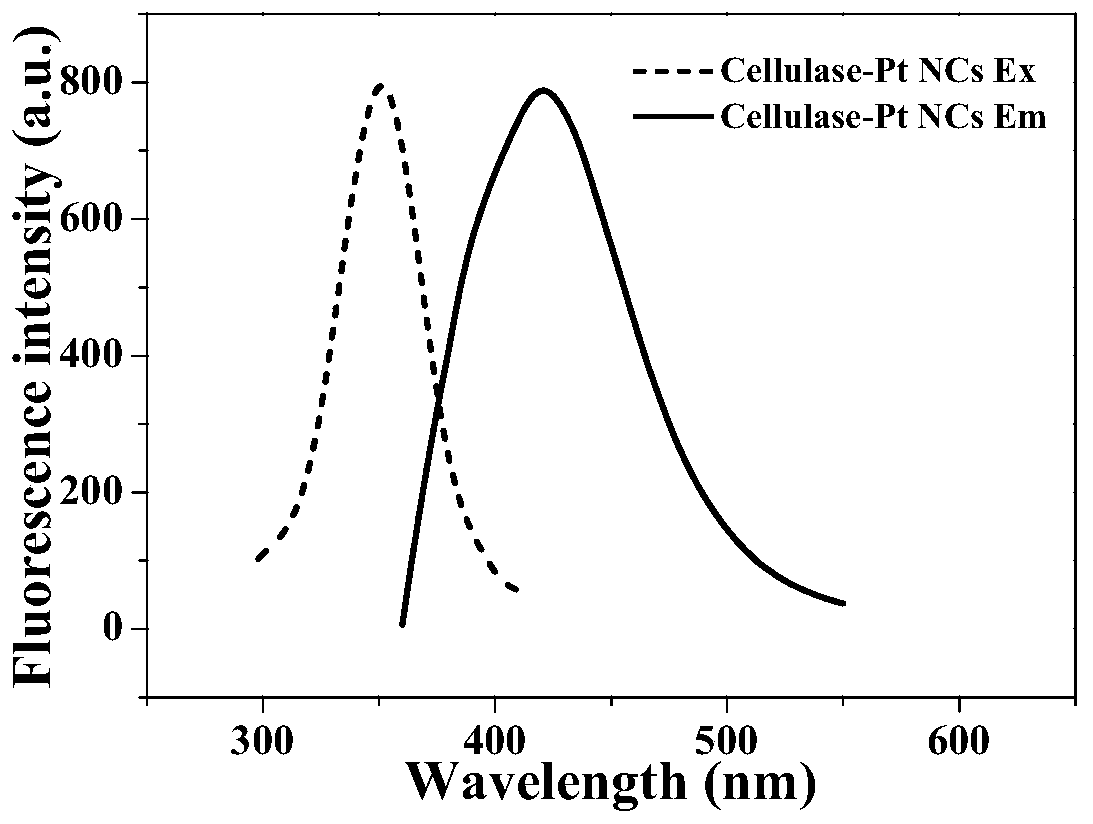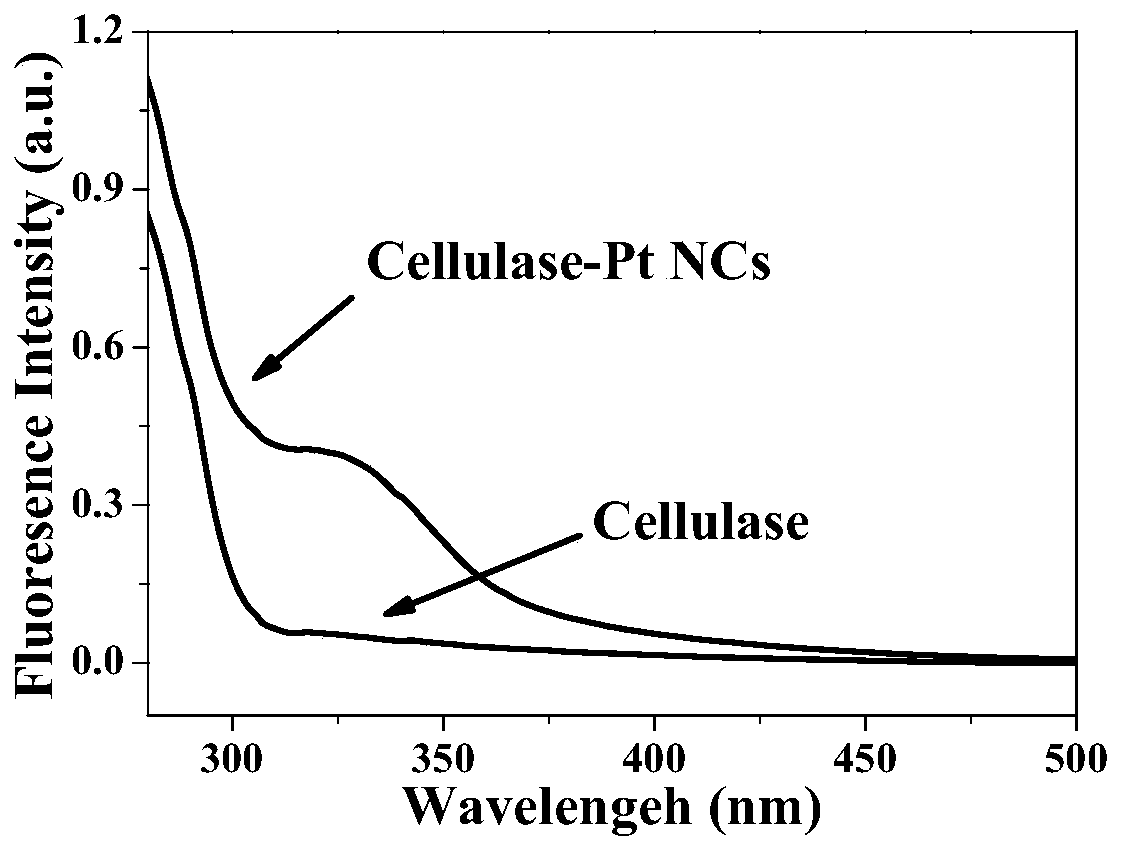Fluorescent cellulase platinum nano-cluster and preparation method and application thereof
A cellulase, platinum nanotechnology, applied in nanotechnology, nanotechnology, fluorescence/phosphorescence, etc., can solve the problems of expensive instruments, high detection limit, poor specificity, etc. Effect
- Summary
- Abstract
- Description
- Claims
- Application Information
AI Technical Summary
Problems solved by technology
Method used
Image
Examples
Embodiment 1
[0038] Example 1: Preparation of cellulase platinum nanoclusters, the specific steps are as follows:
[0039] (1) Take cellulase and add it to pure water to prepare a 1mM cellulase solution;
[0040] (2) Preparation of H at a concentration of 25 mM 2 PtCl 6 the aqueous solution;
[0041] (3) Put H 2 PtCl 6 The solution is added to the cellulase solution, so that the cellulase in it is mixed with H 2 PtCl 6 The molar ratio of the two pure raw materials is 3.5:1, and the vortexer is fully mixed, and the mixing time is 5min;
[0042] (4) then add the aqueous solution of 1M concentration NaOH in the solution obtained in step (3) to adjust the pH of the solution to be 12, mix quickly with a vortexer, and the mixing time is 5min;
[0043] (5) Under the condition of avoiding light, the prepared sample was placed in a water bath, the temperature was set to 37°C, and the reaction time was 12h to obtain a polymer of platinum nanoclusters. After centrifugation at 5,000 rpm / min fo...
Embodiment 2
[0048] Embodiment 2: Preparation of cellulase platinum nanoclusters, the specific steps are as follows:
[0049] (1) Add cellulase to pure water to prepare a 0.5mM cellulase solution;
[0050] (2) Prepare H at a concentration of 100 mM 2 PtCl 6 aqueous solution;
[0051] (3) H 2 PtCl 6 solution was added to the cellulase solution, cellulase and H 2 PtCl 6 The molar ratio is 0.5:1, and the vortex is fully mixed, and the mixing time is 5min;
[0052] (4) Then add 1M NaOH solution in the solution obtained in step (3) to adjust the pH to 12, fully mix with a vortex, and the mixing time is 5 minutes;
[0053] (5) Under the condition of avoiding light, put the prepared sample in a water bath, set the temperature at 37°C, and the reaction time is 12h to obtain the polymer of platinum nanoclusters, centrifuge at 5,000rpm / min for 10min, and take the supernatant solution and stored in a refrigerator at 4°C in the dark.
Embodiment 3
[0054] Embodiment 3: Preparation of cellulase platinum nanoclusters, the specific steps are as follows:
[0055] (1) Add cellulase to pure water to prepare a 2mM cellulase solution;
[0056] (2) 50mM H 2 PtCl 6 solution was added to the cellulase solution, cellulase and H 2 PtCl 6 The molar ratio is 3:1, and the vortex is fully mixed, and the mixing time is 5min;
[0057] (3) Then add 1M NaOH solution in the solution obtained in step (2) to adjust the pH to 12, and mix quickly with a vortex for 5 minutes;
[0058] (4) Under the condition of avoiding light, put the prepared sample in a water bath, set the temperature at 60°C, and the reaction time is 8h to obtain the polymer of platinum nanoclusters, centrifuge at 5,000rpm / min for 10min, and take the supernatant solution and stored in a refrigerator at 4°C in the dark.
PUM
 Login to View More
Login to View More Abstract
Description
Claims
Application Information
 Login to View More
Login to View More - Generate Ideas
- Intellectual Property
- Life Sciences
- Materials
- Tech Scout
- Unparalleled Data Quality
- Higher Quality Content
- 60% Fewer Hallucinations
Browse by: Latest US Patents, China's latest patents, Technical Efficacy Thesaurus, Application Domain, Technology Topic, Popular Technical Reports.
© 2025 PatSnap. All rights reserved.Legal|Privacy policy|Modern Slavery Act Transparency Statement|Sitemap|About US| Contact US: help@patsnap.com



